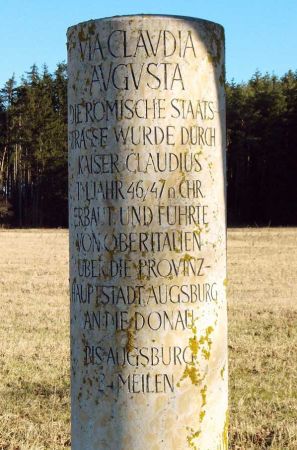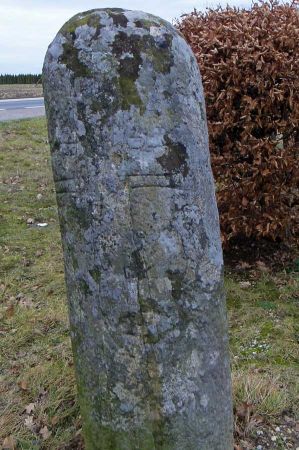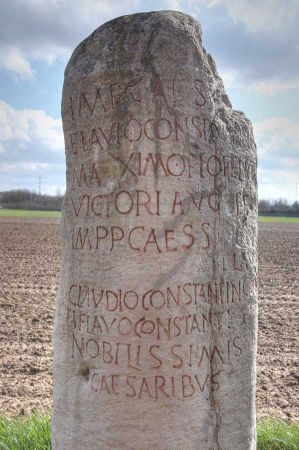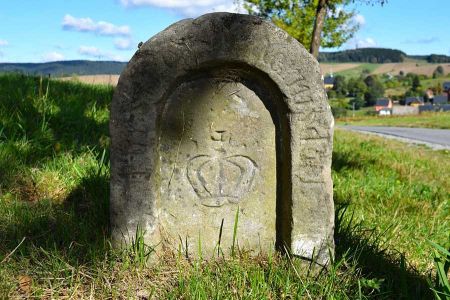Roman milestones, also called "miliarium"
- Written by Portal Editor
Every now and then one hears in the local news during the execution of road works that a milestone has been found, because all too often modern traffic routes directly passes on top of the old routes of the past centuries, sometimes even Roman roads.
Every now and then one finds antique milestones, however, also in building renovations, because at all times “building material lying around” was often integrated into new buildings of churches, monasteries or even single-family houses. In this case, the finds are also referred to as spolia.
First, in the 3rd century BC, streets starting from Rome were equipped with milestones or distance columns, which were continuously placed after every Roman mile along the course of the street. However, in addition to specifying the distance to Rome or the next larger city, a possibility of "self-promotion" was soon discovered, which could be carried out with the help of the milestones. Shortly after the introduction of the milestones, the first tributes to the imperial builder of the street with name and date were also engraved in the stones.
Gaius Sempronius Gracchus founder of mile stones
 During the heyday of the Roman road construction program under Gaius Sempronius Gracchus, the milestones also experienced their first high point, because now their size and stature became more uniform. They were almost always up to three meters long, 50 - 60 centimeters in diameter and contained information on location and distance measured in Roman miles. Provided with a rectangular base, they were usually about 1/4 inserted into the ground so that the rest of the column ended about a man high above the ground. During the imperial era, the milestones were used more and more for propaganda purposes. Under Emperor Augustus, the importance of the milestone medium, which was seen by so many people, was finally recognized in its function as an "advertising medium". Real forms were quickly developed which, in addition to the technically necessary information, reproduced entire stories on the occasion of the road construction as inscriptions. In addition to the imperial dates, local governors and other local information were now also engraved, which, when we were able to find the stones today, gave us a deep insight into history and helped to close many gaps in knowledge.
During the heyday of the Roman road construction program under Gaius Sempronius Gracchus, the milestones also experienced their first high point, because now their size and stature became more uniform. They were almost always up to three meters long, 50 - 60 centimeters in diameter and contained information on location and distance measured in Roman miles. Provided with a rectangular base, they were usually about 1/4 inserted into the ground so that the rest of the column ended about a man high above the ground. During the imperial era, the milestones were used more and more for propaganda purposes. Under Emperor Augustus, the importance of the milestone medium, which was seen by so many people, was finally recognized in its function as an "advertising medium". Real forms were quickly developed which, in addition to the technically necessary information, reproduced entire stories on the occasion of the road construction as inscriptions. In addition to the imperial dates, local governors and other local information were now also engraved, which, when we were able to find the stones today, gave us a deep insight into history and helped to close many gaps in knowledge.
Today around 6,000 of these milestones are known, but most of them are kept in museums or historical buildings in order not to expose them to environmental influences. In some places, however, you can find replicas of these stones, which still provide information about distance, ruler and imperial organization.
Augusta Vindelicorum as a sample of Via Raetia
 One of the most famous milestones can still be seen today in the Roman Forum in Rome. Although this milestone is called "Miliarium Aureum" (Golden Mile Pillar), it is actually made of bronze with gold inscriptions that name the main roads and their destinations from Rome.
One of the most famous milestones can still be seen today in the Roman Forum in Rome. Although this milestone is called "Miliarium Aureum" (Golden Mile Pillar), it is actually made of bronze with gold inscriptions that name the main roads and their destinations from Rome.
But the miliaria did not exist on all streets in the empire, or at least not so often. In the distant provinces, milestones were set at prominent landmarks or at the intersections of important trade routes. Here, the provincial capital was often used as the starting point (caput viae) for measuring the road distances. Augsburg, the then Augusta Vindelicorum, is a good example of this. On all the milestones found so far in the Raetia region, the distance information was always measured starting from the provincial capital, so that one has to assume that there must have been something like a central road administration with the respective city governor in ancient Rome.
There was a slight change in the formerly Celtic areas, as measuring in Roman miles never really caught on. Here the distances were measured in Leugen even under Emperor Trajan, accordingly the stone was called Leugenstein.
Here are some examples of Roman length measures:
 Unit Translates today's measure base measure
Unit Translates today's measure base measure
pes foot 296.352mm 1 foot
passus double step 1.48176 m 5 feet
stadium stadium 185.22 m 625 feet
mille passus mile 1.48176 km 5,000 feet
leuga Leuge 2.22264 km 7,500 feet
Please read as well:
